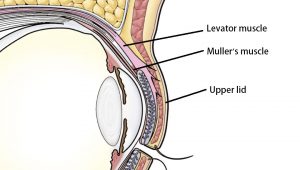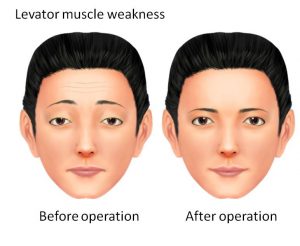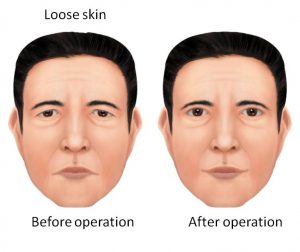- 2019/12/14
- Ptosis Correction
Due to Levator Muscle Weakness, Dull Eyes Still Exist Even with Sufficient Sleep
28 year-old Ms. Chen is frequently asked by her colleagues at work, “Why are you so moping?” However, she thinks she actually has enough sleep and is full of energy, but doesn’t know why she can barely open eyes, giving others a feeling of tiredness.
30 year-old Ms. Chang has had asymmetrical eyes since childhood. Her smaller right eye is especially dull, so she always parts her hair on one side to cover it. She often wonders if her both eyes can be bright and energetic, it will be much better.
Though young, 34 year-old Ms. Lin already has many forehead wrinkles, but her mom and sister don’t have this kind of problem. She doesn’t know why whenever she opens eyes, she would unconsciously raise her chin or raise her eyebrows hard.
Is it because of levator muscle weakness?
The mechanism of opening the upper eyelid mainly relies on two muscles: the levator muscle and the Muller muscle. When they contract, they pull the tarsus plate and open the upper eyelid.

When a normal eye looks forward, the upper eyelid will cover about 1-2mm of the black part of the eyeball; if the black part of the eyeball is covered more than 2mm, it is called dominant ptosis.
Some will train their forehead muscles to raise their eyebrows and also their eyelids to improve the difficulty of opening eyelids, and it is due to levator muscle weakness. When the patients with recessive ptosis close their eyes, their eyebrows will go back to the normal positions, but once they open eyes, they will raise eyebrows and form wrinkles on the forehead.
A droopy upper eyelid —-is it due to loose skin or muscle weakness?
There are two common causes of droopy eyelids:
Eye opening muscle weakness

Loose skin

Before the operation, careful evaluation is a must. If it is difficult to lift the eye muscles, it is necessary to undergo the eye muscle surgery because only shortening skin is not helpful. For elder patients, sagging skin appears more frequently, and a good preoperative evaluation of the function of the levator muscle can avoid asymmetrical eyes or droopy eyelids after the excessive skin shortening surgery; if the skin is removed more, the patient’s eyes can’t both open big or close tightly.
Self-testing
Unless the lower part of the upper eyelid covers the black eyeball, if the eyebrow is very high with a lot of forehead wrinkles, it is probably the levator muscle problem (Figure 2); if the eyebrow position is similar to that when the eyes close, it is probably the excessive skin problem (Figure 3). Should you have any questions, please consult a professional ophthalmologist.
Treatment of Levator Muscle Weakness
There are many reasons for the levator muscle weakness. After the internal medicine problems are ruled out, surgery can be conducted. For children‘s obscured vision or astigmatism affecting eyesight, or adults‘ obscured vision, fatigue, dull eyes and appearance considerations, surgery can help make the eyes look better.
There are many forms of droopy eyelid operations, so an ophthalmologist will see the patient’s levator muscle functions, whether the operation is more than two times, and the patient’s status to adopt different methods, so before undergoing operation, the patient must consult a professional doctor for evaluation. Surgical safety is priority.
My news link:https://news.ltn.com.tw/news/life/paper/1196392





COMMENTS
In order top protect personal privacy,the message will be determined according to the situation.※is required field.
共0則留言